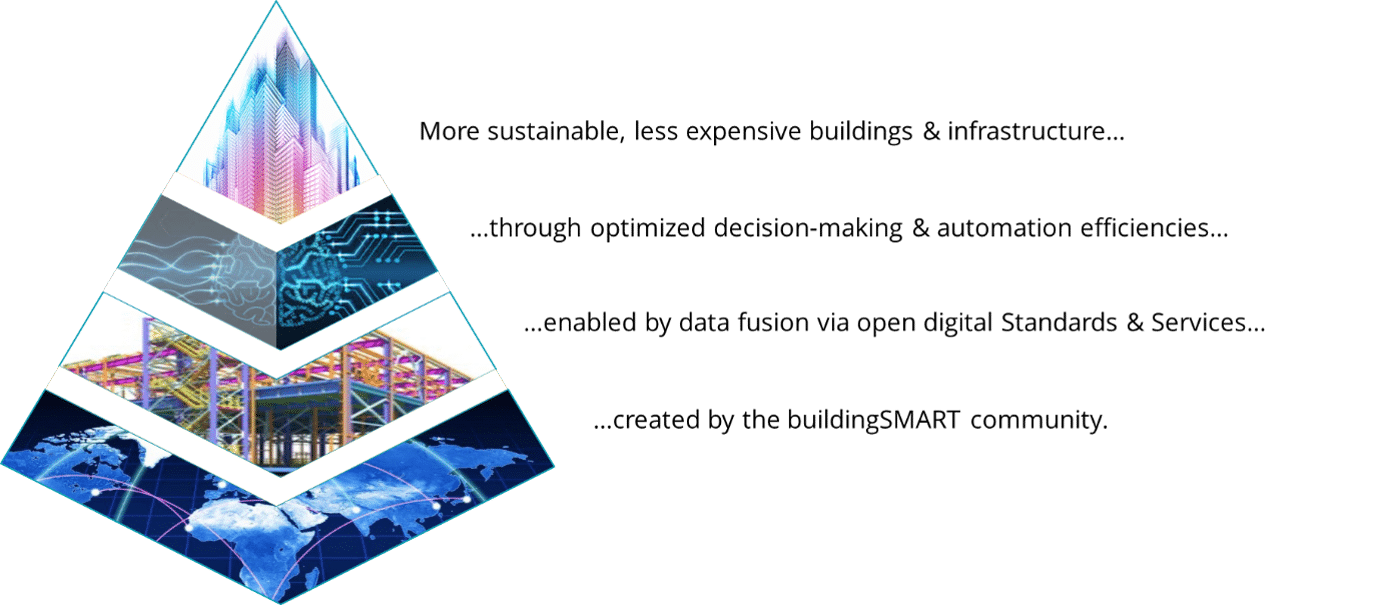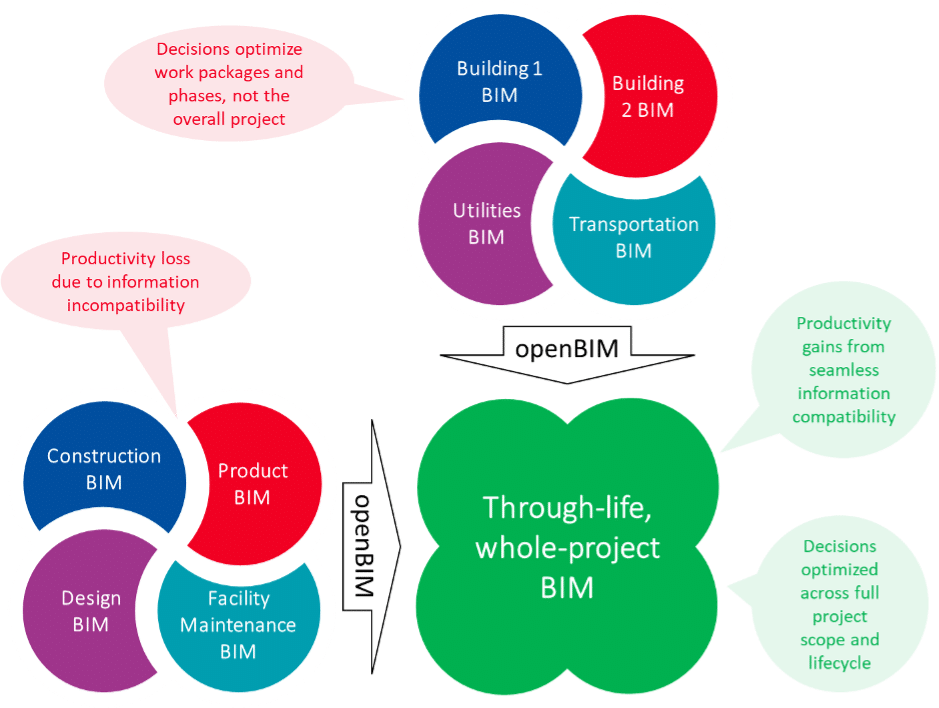openBIM®: what is it and why do we need it?
Blog one in a series of three.
This is the first in a series of three blogs that explore:
① what is openBIM and why is it so important;
② the openBIM ecosystem; and
③ how to implement openBIM workflows.
Why do we need openBIM?
The built environment – buildings and infrastructure assets that sustain societies and industry – affects nearly all aspects of our lives, for better and worse. It defines much of our physical world but consumes vast natural and financial resources and is becoming ever more complex. The sector, therefore, faces a fundamental challenge: how to produce and maintain more and better buildings and infrastructure with less financial and environmental impact, in other words: how to improve productivity and sustainability on a global scale. One answer is openBIM.
What is openBIM?
openBIM enhances the value of Building Information Modelling (BIM) by ensuring it conforms to a publicly available standardized communication language, which makes its information exchangeable and compatible with that of all stakeholders, even when in different locations, created by different organizations, and using different software tools.

The open in openBIM means that everyone has access to the same definitions of data and data formats. This means data can be written and read from different sources, all parties can collaborate on the data, and data access is retained throughout the life of a project and beyond. Essentially, it allows everyone to take control of their digital destiny without being forced into using a specific software tool or workflow.
What does this mean for projects?
To tackle the fundamental challenges of productivity and sustainability, we need to do two things: improve the efficiency of our design, construction and asset management processes; and make smart decisions that optimize how we construct and maintain our built environment. In other words, we need to allow both machines and humans to look across the full scope of a project (across different organizations, work packages and software tools) to automate processes and improve decision-making. openBIM is vital to both of these.

openBIM helps us to optimize our decisions at the highest level because it allows us to combine information from multiple sources to create the best possible picture of different project options and their consequences. For example, we can improve decision support through automated simulations to minimize carbon and environmental impacts, project timescales and/or costs.
openBIM improves process efficiency by providing design, construction and maintenance information from multiple sources in standardized, machine-interpretable forms. That allows software tools to ingest, analyze, make recommendations and even take direct actions based on valuable information that is built up from different applications and can now be retained throughout the life of a project. This improves quality, reduces risk and rework, and saves time through automation – all of which boosts productivity. Furthermore, openBIM promotes continuous innovation by allowing emerging new software tools to be easily adopted.

Where is it used?
openBIM approaches have been used successfully worldwide for decades and are supported by most software tools. Extensive case studies can be found here on the buildingSMART International website.
To take one example, the recent NZ$2 billion, five-year upgrade of Auckland Airport used an openBIM approach to merge and collaborate on designs from over 30 suppliers, each able to use the work processes and software of their choice. Furthermore, these integrated both new and legacy facility information and combined BIM with geospatial information – all creating a comprehensive, whole-life model for the future airport. This unlocked productivity and enhanced decision-making.
Author: Clive Billiald, CEO, bSI
